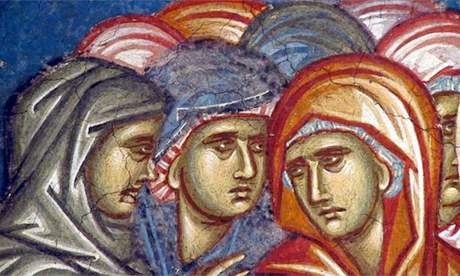Women served as deacons in Europe for about a millennium in a variety of ministerial and sacramental roles, according to Phyllis Zagano, an author and professor of religion at Hofstra University, and Bernard Pottier, S.J., a faculty member at the Institut D’Études Théologiques in Brussels, in an interview this week with America.
“They anointed ill women; they brought communion to ill women,” said Ms. Zagano.
They also participated in baptism, served as treasurers and, in at least one case, participated in an annulment.
Discussing that annulment, Ms. Zagano said a woman in Syria “complained that her husband was beating her.
It was the woman deacon who examined the bruises and gave the testimony to the bishop.
Well, to me, that’s an annulment—she is providing the information.”
“But to say that everybody did the same thing all over I think is disingenuous,” Ms. Zagano added.
Father Pottier said he was able to find strong evidence of women deacons in church records and histories, but “not everywhere and not always because it was also a choice of the bishop.”
In an interview with Michael J. O’Loughlin, America’s national correspondent, on Jan. 14, Ms. Zagano and Father Pottier, who serve on the Vatican’s Study Commission on the Women’s Diaconate, discussed their research on women deacons and the early church.
They emphasized that roles for women deacons varied greatly depending on geography.
The two commission members were in New York for a symposium at the Fordham Center on Religion and Culture called “The Future of Women Deacons”.
Ms. Zagano said, “There was ordination…. The most interesting evidence is the fact that the ordination ceremonies [we discovered] for women deacons were identical to the ordination ceremonies for men.”
Father Pottier said women began to serve as deacons “very early” in the Eastern church but by the 10th century that ministry ended. In the West, women served as deacons from approximately the fifth century until the 11th or 12th century. Continue reading
